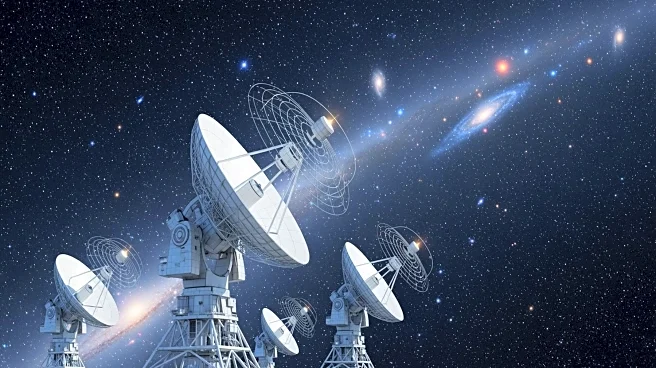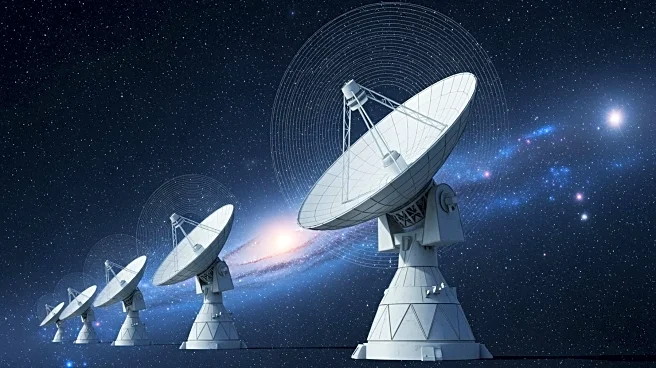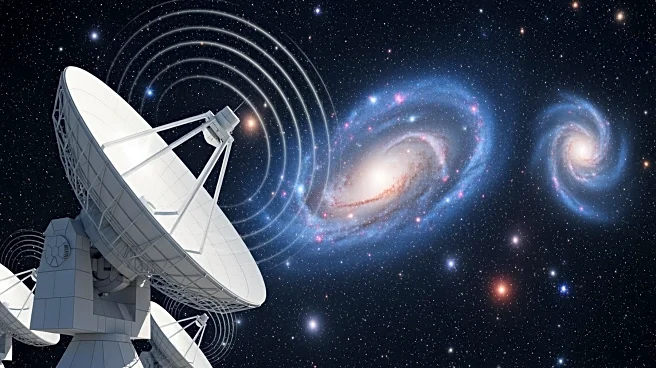What's Happening?
Researchers at Tel Aviv University have made predictions about detecting radio waves from the early Universe, which could provide insights into dark matter. Led by Prof. Rennan Barkana, the team suggests
that during the 'cosmic dark ages,' dark matter formed dense clumps that attracted hydrogen gas, emitting intense radio waves. This approach offers a new method to investigate dark matter, a major scientific mystery. The study, involving international collaborators, was published in Nature Astronomy. The cosmic dark ages, a period before the first stars formed, can be explored by detecting radio waves emitted by hydrogen gas. Earth's atmosphere blocks these signals, necessitating space-based instruments, particularly on the moon. The timing is favorable as global lunar missions are underway, with agencies seeking scientific objectives for moon projects. This research highlights the potential of lunar-based radio astronomy to study the early Universe.
Why It's Important?
Understanding dark matter is crucial as it constitutes most of the Universe's matter, yet remains largely mysterious. The early Universe provides a pristine setting to study dark matter without interference from cosmic structures. Detecting radio signals from the cosmic dark ages could transform our understanding of the Universe's formation. The research underscores the importance of lunar-based radio astronomy, offering a new observational window that could lead to surprising discoveries. The study aligns with global efforts to return to the moon, providing meaningful scientific objectives for future missions. Successful detection of these signals could advance theories of dark matter, offering insights into its properties and behavior.
What's Next?
The research suggests building a telescope on the lunar surface to detect radio waves from the cosmic dark ages. This aligns with the global race to return to the moon, with countries like the United States, Europe, China, and India pursuing lunar missions. These agencies are seeking scientific objectives for future moon projects, and this research highlights the potential of lunar-based radio astronomy. Additionally, the Square Kilometre Array (SKA), a global collaboration involving 80,000 radio antennas, aims to capture patterns of radio emissions that could reveal dark matter clumps. Prof. Barkana plays a key role in this project, which could provide valuable insights into the early Universe.
Beyond the Headlines
The study opens a new observational window for radio astronomy, potentially leading to surprising discoveries. It emphasizes the importance of understanding dark matter, a substance that constitutes most of the Universe's matter but remains largely unknown. The research highlights the potential of lunar-based radio astronomy, offering a pristine setting to study dark matter without interference from cosmic structures. The study aligns with global efforts to return to the moon, providing meaningful scientific objectives for future missions. Successful detection of these signals could advance theories of dark matter, offering insights into its properties and behavior.













